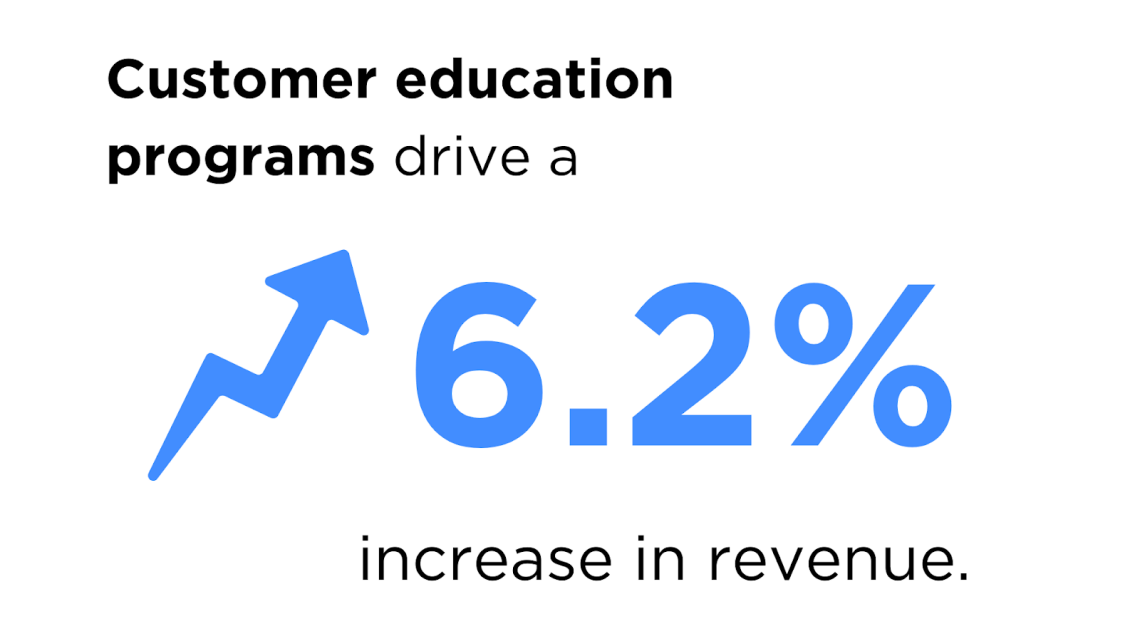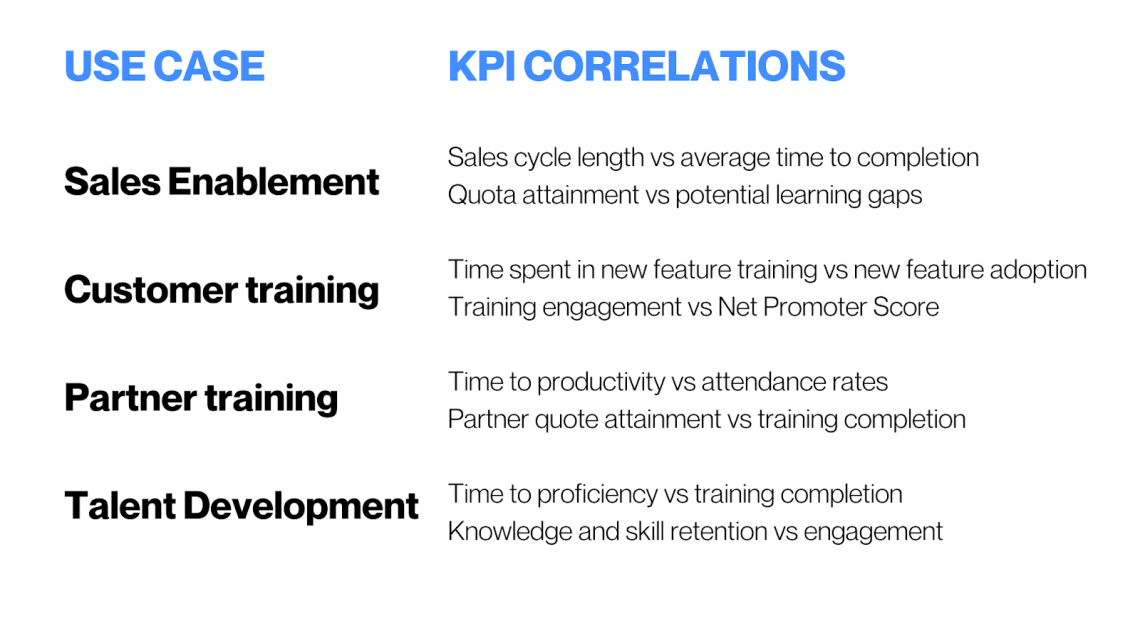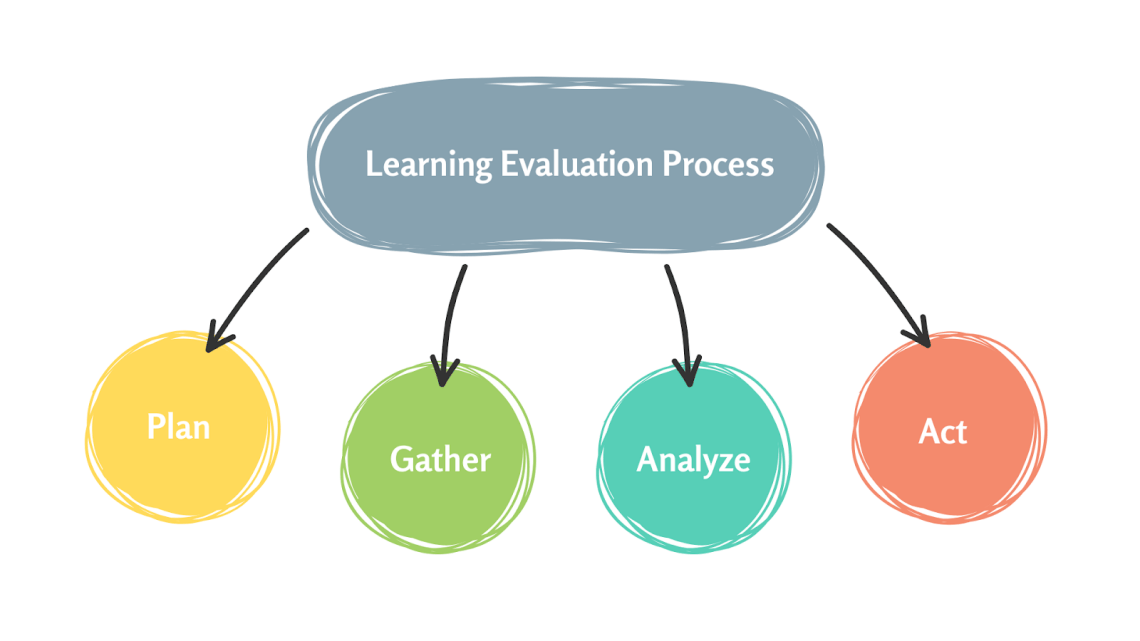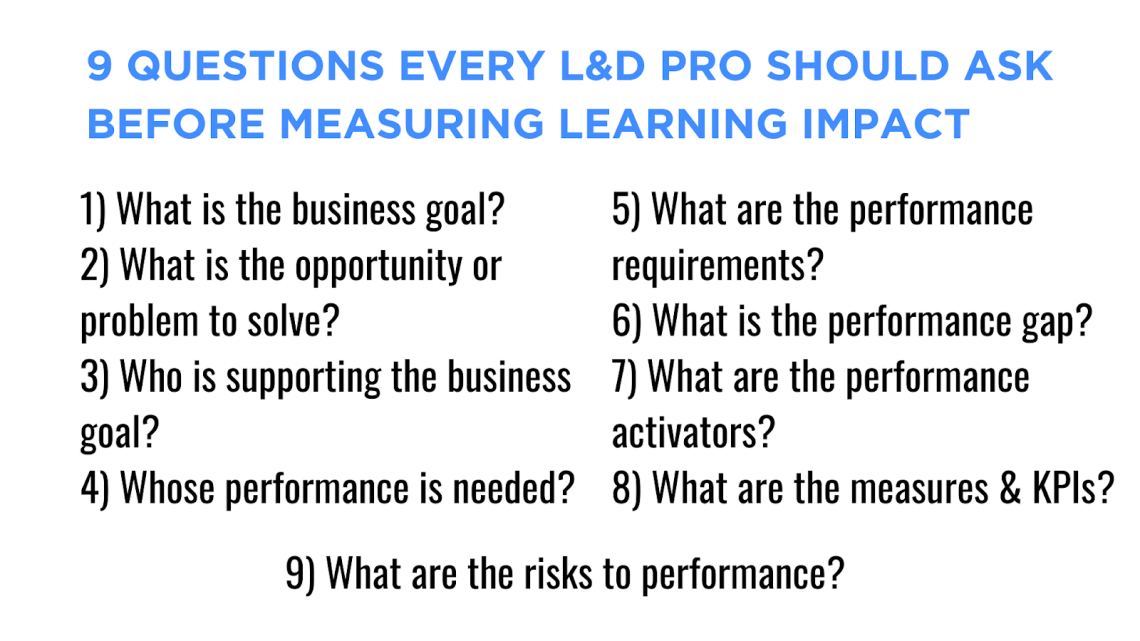In the world of corporate learning, the impact of learning is no mystery. The results speak for themselves.
Take onboarding, for example. Exceptional onboarding isn’t just a nice-to-have; it boosts new hire retention by 50% and productivity by 62%.

Or consider customer education programs—these are not merely incidental initiatives. They drive a 6.2% increase in revenue, a 7.4% jump in retention, and a 6.1% drop in support costs.
Partner training? It strengthens relationships for 74% of businesses and enhances customer awareness of products and services for 67%. These are not small gains—they are transformational.
But here’s the kick: most organizations struggle to measure learning outcomes effectively. In fact, 42% of companies lack a standardized approach to measure training effectiveness which means learning impact goes unnoticed.
Why is measuring learning impact so difficult?
The answer is complicated. For starters, many L&D professionals don’t have a clear roadmap. They lack access to crucial business performance data—sales performance numbers, customer renewal rates, the metrics that tell the real story.
Add to that the limitations of outdated learning management systems (LMSs) that can’t provide robust analytics or integrate seamlessly with other tools. These barriers don’t just slow progress; they obscure it.
So, how do we crack the code? How do we connect learning to measurable business outcomes?
Ask the right questions before measuring learning impact
The secret lies in taking a detective’s approach—methodical, curious, and strategic. In Docebo’s recent webinar, Kevin M. Yates,the L&D Detective®,” lays out 9 essential questions every L&D professional must ask.
The following questions serve as a roadmap for learning leaders, guiding you to uncover the link between learning performance and business goals:
What is the business goal?
Every learning initiative starts with a question, and it’s deceptively simple: What are we trying to achieve? Is it boosting revenue, keeping customers loyal, or streamlining how work gets done?
The goal isn’t just to create learning for learning’s sake but to anchor it firmly to a tangible business objective. It’s this alignment—between the why of the business and the what of learning—that transforms learning strategy from a checkbox exercise into a powerful driver of results.
What is the opportunity or problem to solve?
When sales begin to dip, the instinct is often to scramble for solutions—any solution. But what if the real answer isn’t the one we expect?
Declining sales could stem from any number of factors: insufficient product knowledge, ineffective sales techniques, or something else entirely different.
The challenge is to avoid being an order taker, like John Zurovchak, PhD, Sr. Director, Operations Training of Burger King argues in episode 7 of award-winning thought leadership series Leaders in Learning.
And instead, zero in on the root cause rather than addressing surface-level symptoms.
And here’s the twist: sometimes, learning isn’t the remedy at all. Sometimes, the answer lies elsewhere.
Who is supporting the business goal?
Behind every great initiative is a coalition of champions—people who have a vested interest in its success. These stakeholders, whether they are department heads, team leads, or executive sponsors, act as the wind in the sails of the project.
For example, if the goal is to improve compliance completion rates, the legal or risk management team isn’t just helpful—they’re essential. They shape the training content or training programs and ensure they align with the standards that keep the organization afloat.
Without these champions, learning initiatives often drift, untethered from the real-world outcomes they’re meant to achieve.
Whose performance is needed?
Every business goal depends on the actions of specific people. The key is figuring out whose performance will make or break the effort.
Is it the sales team closing deals? The customer support team enhancing satisfaction? The frontline workers mastering new tools?
Identifying the individuals or groups most critical to success ensures that learning initiatives hit the bullseye, targeting exactly where impact is needed most.
What are the performance requirements?
Think of performance requirements as the blueprint for success. What specific behavior, skill, or competency do employees need to demonstrate to move the needle on the business goal?
These aren’t abstract ideas; they’re the measurable outputs that define what a good learning program looks like. For instance, if the goal is to boost customer satisfaction, the requirement might be mastering empathy-driven communication.
These requirements will later serve as your guideposts for learning measurement, shaping the key performance indicators (KPIs) that reveal whether the initiative has truly been delivered.
What is the performance gap?
Before you can fix a problem, you need to understand it. The performance gap is the space between where employee performance is now and where it needs to be to achieve the business goal.
Are they struggling with outdated knowledge? Missing critical skills? Or facing barriers that make even basic tasks harder than they should be?
Pinpointing the gap doesn’t just tell you what’s wrong—it shows you where the opportunity lies to make the greatest impact and provide the most effective training.
What are the performance activators?
Performance doesn’t happen in a vacuum.
It’s activated by the tools, resources like training materials, and support systems that enable success. Sometimes, the solution is straightforward: a new course or a coaching program.
Other times, it’s more nuanced—a change in workflow, access to better technology, or even an organizational shift in priorities.
Identifying these activators ensures that learning is part of a larger ecosystem designed to help learners—be they employees, customers, partners, or members—thrive.
What are the measures and KPIs?
Measurement is where the rubber meets the road. KPIs turn abstract goals into concrete results, showing exactly how learning impacts the business.
For example, if the focus is customer training, you might measure the time spent on new feature training against adoption rates. For partner training, it could be time to productivity versus attendance rates or employee engagement.
By connecting learning outcomes to specific performance metrics, you not only demonstrate return on investment—you build a case for continued investment in learning.
Here are some use cases and KPI examples to determine the impact of training:

What are the risks to performance?
Even the best-laid plans face obstacles. Whether it’s time constraints, resource shortages, or conflicting priorities, these risks can derail the most promising initiatives.
For instance, sales personnel constantly on the go may struggle to attend time-consuming training sessions, even if they’re e-learning.
The solution?
Microlearning: bite-sized, just-in-time training that fits seamlessly into their flow of work.
Anticipating these risks doesn’t just mitigate them; it makes your learning initiatives more resilient and effective.
Moving from questions to learning impact
Answering these questions is just the start. The real magic happens when the L&D team takes action, aligns learning initiatives with business goals, and uses data to gain valuable insights and measure success.
But here’s the truth: even with the right questions, without the right tools, it’s almost impossible to track performance effectively.
Many organizations struggle with analytics, relying on outdated LMS systems that fail to connect learning with business outcomes.
A case study in measurable impact
Take Ellucian as an example. Before integrating Docebo LearnData, the enterprise software provider for higher education faced challenges in harnessing its learning data.
With over 3,000 employees and multiple departments requiring access to learning insights, Ellucian struggled to efficiently combine and analyze data. This inefficiency hindered their ability to deliver comprehensive reports and limited the broader organization’s access to critical learning data.
By leveraging Docebo LearnData powered by Snowflake, Ellucian centralized their learning data into their existing business intelligence ecosystem. They seamlessly integrated learning insights with business data, creating custom reports and visual dashboards tailored for different stakeholders.
This approach allowed teams across the organization to access actionable insights real-time, empowering data-driven decisions at every level. And with their new knowledge, the results were striking.
Automated reporting saved over 130 hours annually, freeing up valuable time for strategic initiatives like testing learning platform upgrades. Leadership now leverages L&D data to uncover revenue trends, identify high-ROI courses, and guide business strategy.
With a unified view of their data, Ellucian transformed its training initiatives into a vital driver of organizational success.
Ready to measure your learning impact?
The journey to measurable success starts with curiosity, collaboration, and the right tools. Explore the L&D Detective Kit to uncover strategies for connecting learning with business impact.
And see how Docebo can be your strategic partner—take a tour or request a demo to find out why over 3,800 companies trust us to power their learning journeys.
Learning impact FAQs
What are the benefits of measuring learning impact?
There are many benefits to measuring learning impact. For starters, it sharpens your learning strategy with data-driven performance metrics to know where to make performance improvements, boosts collaboration with stakeholders, and ensures resources hit the mark. Plus, it helps preserve institutional knowledge and makes budget talks with the executive team a breeze.
What are popular evaluation models?
Several models have been developed to assess learning outcomes, each offering unique perspectives and methodologies.
- Kirkpatrick’s Four Levels of Evaluation
This model measures training effectiveness across four stages: Reaction (learner satisfaction), learning (knowledge acquisition), behavior (application of skills on the job), and results (impact on organizational goals). It’s widely recognized as a foundational approach to evaluating learning outcomes.
- Phillips ROI Model
Phillips ROI Model is an extension of Kirkpatrick’s model by adding a fifth level focusing on return on investment (ROI), or the monetary value achieved from training compared to its cost. It emphasizes the financial impact of training programs.
- Anderson’s Model of Learning Evaluation
Anderson’s model aligns learning outcomes with organizational goals through three stages: satisfaction and planned action, learning performance, and organizational performance. It focuses on demonstrating the business value of learning initiatives.
- Brinkerhoff’s Success Case Method
This method focuses on identifying the most and least successful cases within a training program and pinpointing the factors that led to its success or failure to better plan for the future. It can be used in combination with the aforementioned methods.
- Context, Input, Process, Product (CIPP) Model
A bit like getting the answers to the nine questions in this article, the aim of this model is to evaluate programs through four lenses: context (the need for the program), input (strategy and resources), process (implementation), and product (outcomes). It offers a comprehensive framework for learning program evaluation.
What should the learning evaluation process look like?

Start by tackling the key questions outlined in this article. What needs to be measured? Who should be involved? Which KPIs or performance metrics matter most? And don’t forget to map out how long the evaluation will take. A solid plan is your foundation to success.
Next, gather your data! Use interviews, surveys, and questionnaires to get insights directly from learners. Pull performance data from stakeholders with access to metrics like customer renewals or sales quotas.
Once you have the data, dive into the analysis. Correlate the findings and tap into your learning platform’s analytics—tools like Docebo’s LearnData are a game-changer for uncovering actionable insights.
Finally, translate those insights into action. This could mean designing targeted learning interventions, launching new training programs, or integrating post-training evaluations to keep the momentum going. It’s all about turning data into decisions that drive real impact.
How do you calculate ROI in your learning initiatives?
To calculate the ROI of learning initiatives, you need to know two things: the training costs, and the revenue associated with the success of the learning initiative.
The formula is as follows,

So if your learning program cost $50,000 to implement, but it earned $100,000 in revenue from courses purchased by your customers as an example, then its ROI was 200%.

